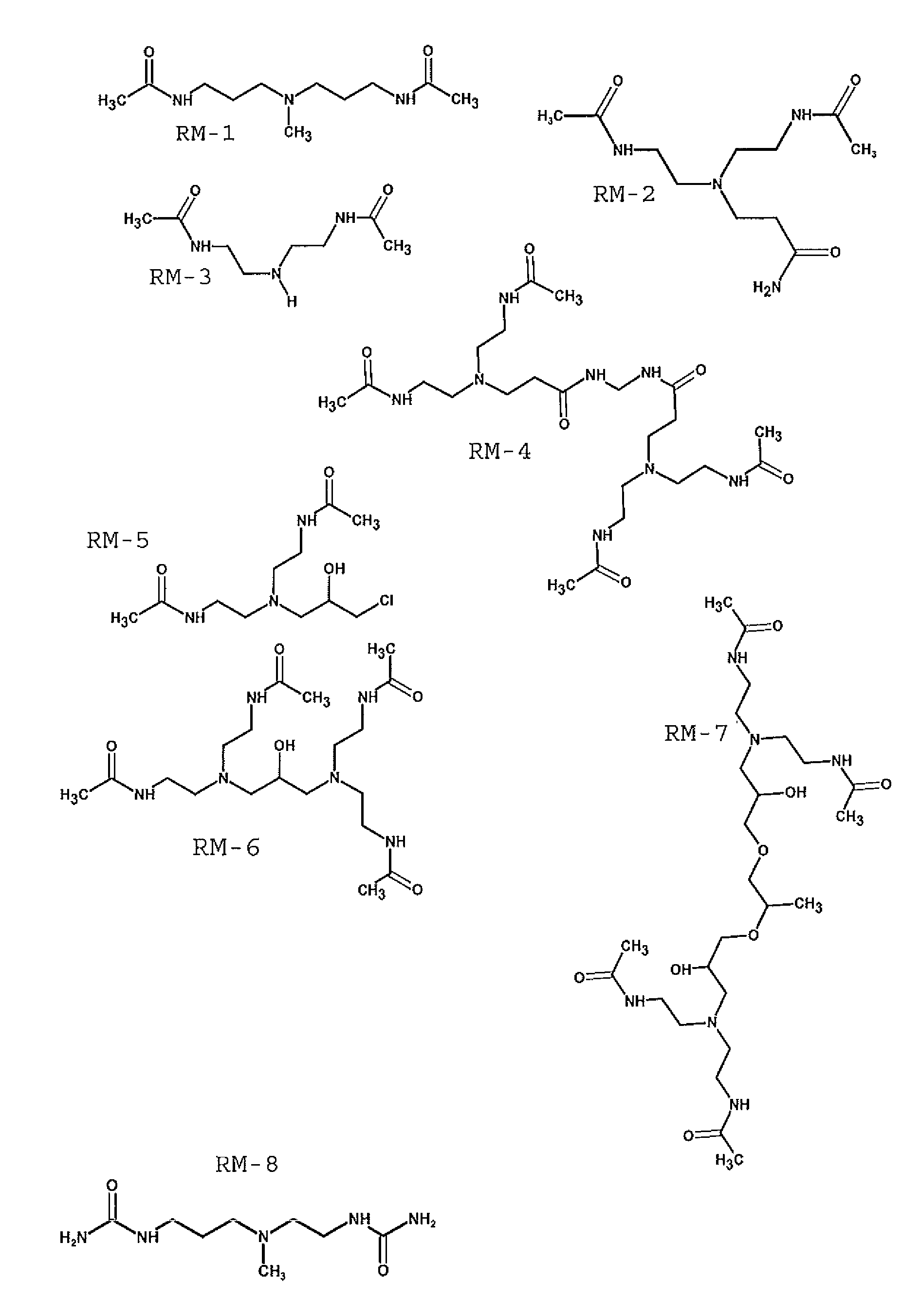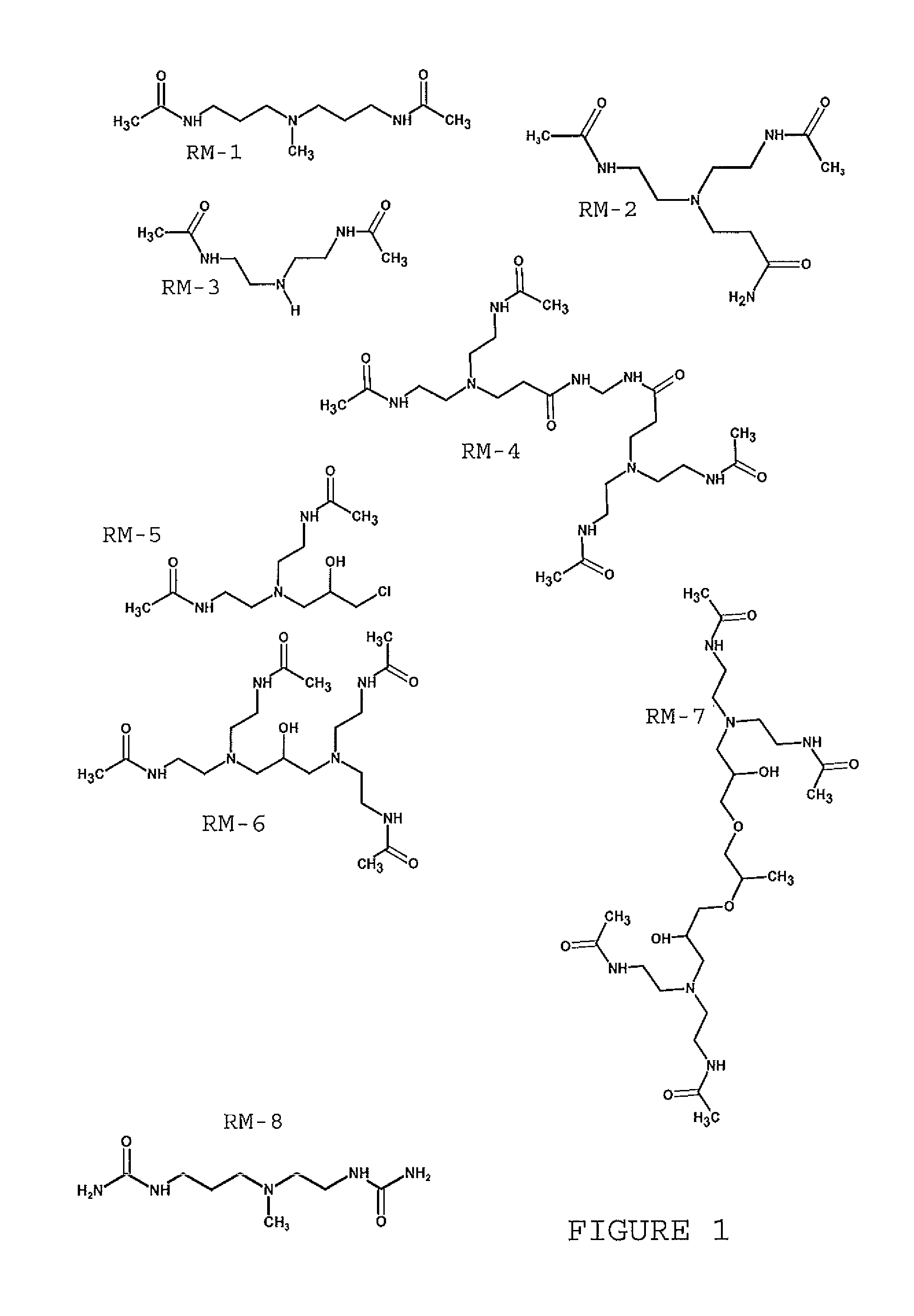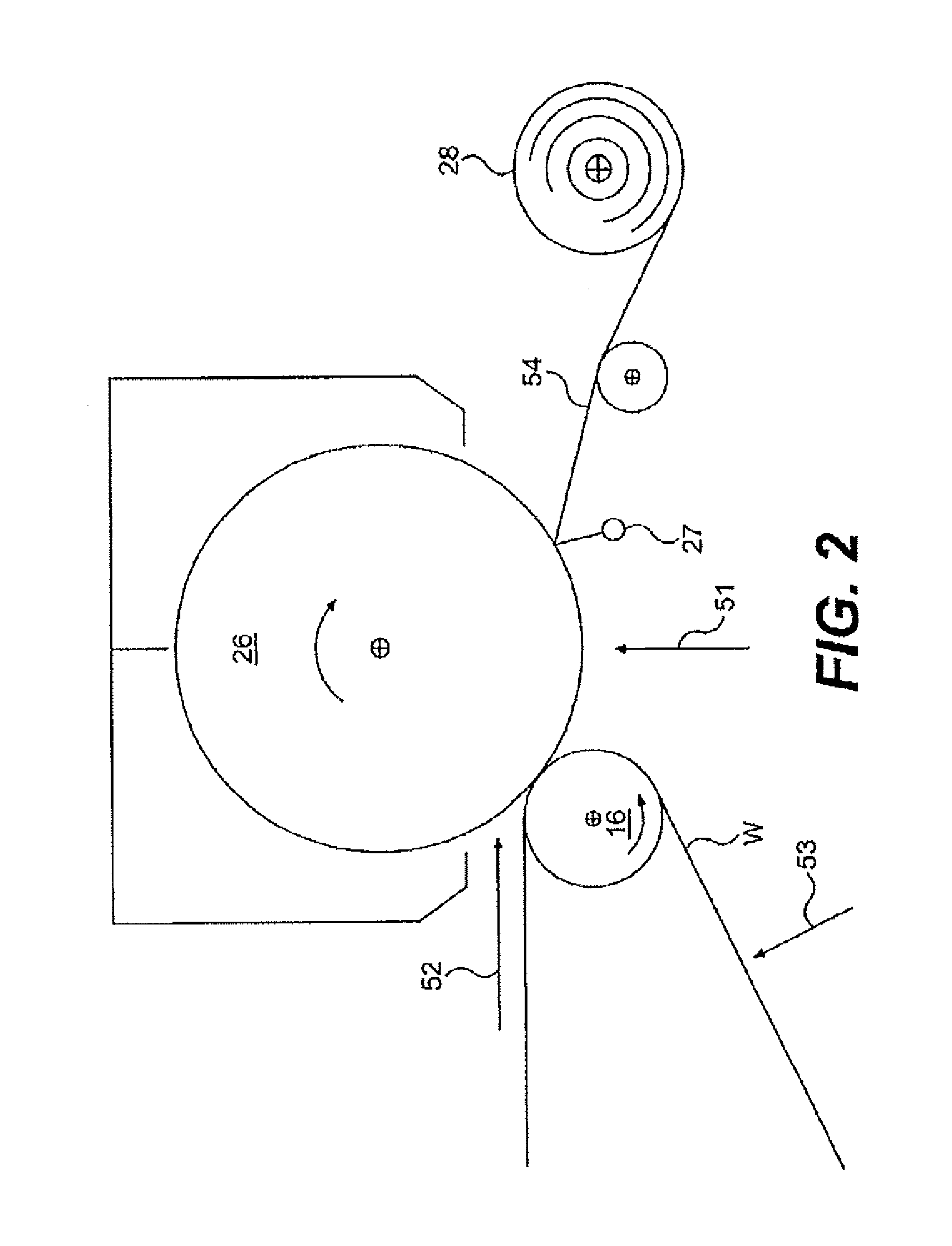Thermosetting Creping Adhesive With Reactive Modifiers
a technology of reactive modifiers and creping adhesives, applied in special paper, textiles and paper, after-treatment, etc., can solve the problems of increasing the perceived softness of the resulting tissue and towel products, altering many characteristics, and conflicting degree of structural integrity arising from the paper-making process
- Summary
- Abstract
- Description
- Claims
- Application Information
AI Technical Summary
Problems solved by technology
Method used
Image
Examples
example 1
Preparation of a Lightly Crosslinked PAE-Type Polymer
Polyamidoamine Prepolymer
To a 2 L reactor equipped with a stainless steel stir shaft, heating element, and reflux / distillation condenser was added 600 g of diethylenetriamine (5.82 mole). To this with stirring was added 877 g of solid adipic acid (6.00 mole) slowly over 30 minutes. The reaction exothermed from room temperature to about 145° C. over this time, and reflux was observed. After all of the adipic acid was added the reaction was slowly heated to about 155° C. and the condenser was changed to distillation. Water was removed from the reactor until the viscosity of a diluted sample reached a desirable value. At that point, the condenser is switched back to reflux and water is added slowly to dilute the reaction mixture. The final viscosity (measured at 25° C.) is about 300 cP at 45% solids. The molecular weight MW measured by GPC is about 40,000 Daltons.
PAE-type Polymer Crepe Adhesive (PAE-1)
To a 2 L reactor is charged 452 ...
example 2
Comparison of PAE-Type Polymers
Table I compares the properties of a reactive, lightly crosslinked PAE-type polymer of the present invention (PAE-1) with other commercially available PAE-type creping adhesives (PAE-2 through PAE-5) available both from Georgia-Pacific as Unicrepe Products (PAE-2 through PAE-4) and a prior art PAE adhesive (PAE-5). The high level of chlorohydrin functionality in the PAE-type adhesive of the present invention is evidenced by the relatively high level of covalent chlorine measured in the polymer. Molecular weights were measured by GPC. Note also that the molecular weight of PAE-1 is relatively low.
TABLE I% CovalentAdhesiveMw (×105 Daltons)ChlorinePAE-1 3.200.32 PAE-2 8.600.08 PAE-3 0.930.00 PAE-411.0 0.00 PAE-5 3.500.085
example 3
Comparison of Properties of PAE-Type Polymers
Table II provides a comparison of creping performance of an adhesive of the present Invention with other commercially available adhesives. In particular, reported in Table II are measured property values of a reactive, lightly crosslinked PAE-type polymer of the present invention (PAE-1) as compared with other commercially available PAE-type creping adhesives (PAE-2 through PAE-5) available both from Georgia-Pacific as Unicrepe Products (PAE-2 through PAE-4) and from another commercial source (PAE-5).
TABLE IIAdhesiveDurabilityPeel AdhesionCylinder ProbePAE-194255197PAE-289213176PAE-30175209PAE-491273117PAE-590197173
The adhesive of the present invention (PAE-1) gives very good adhesion, comparable to the high adhesion developed by a very high molecular weight, non-reactive crosslinked adhesive, e.g., PAE-4. Note that the initial molecular weight of PAE-1 is significantly lower than that of PAE-4 (Table I); but the latent reactivity of the ...
PUM
| Property | Measurement | Unit |
|---|---|---|
| weight average molecular weight | aaaaa | aaaaa |
| molecular weight | aaaaa | aaaaa |
| weight average molecular weight | aaaaa | aaaaa |
Abstract
Description
Claims
Application Information
 Login to View More
Login to View More - R&D
- Intellectual Property
- Life Sciences
- Materials
- Tech Scout
- Unparalleled Data Quality
- Higher Quality Content
- 60% Fewer Hallucinations
Browse by: Latest US Patents, China's latest patents, Technical Efficacy Thesaurus, Application Domain, Technology Topic, Popular Technical Reports.
© 2025 PatSnap. All rights reserved.Legal|Privacy policy|Modern Slavery Act Transparency Statement|Sitemap|About US| Contact US: help@patsnap.com



